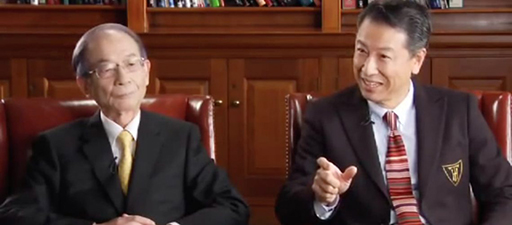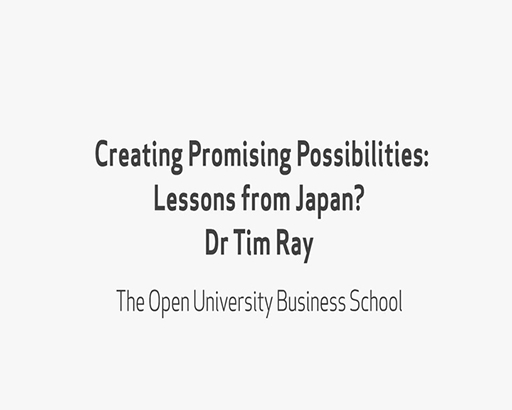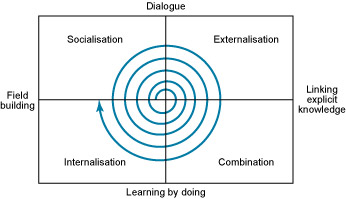7.1 Lessons from Japan
A distinctly different approach to both knowledge creation and wise leadership is found in Japan.
Some of the most insightful theories about Japanese-style knowledge creation and Japanese leadership have been advanced by Ikujiro Nonaka, whom many regard as Japan’s most distinguished management scholar.
Nonaka’s Harvard Business Review paper, ‘The knowledge-creating company’ (1991), brought his theory of knowledge creation to international attention. It argues that:
Much as manufacturers around the world have learned from Japanese manufacturing techniques, any company that wants to compete on knowledge must also learn from Japanese techniques of knowledge creation.
The specifically Japanese techniques of knowledge creation referred to by Nonaka include more active accessing of the tacit knowledge by team members and a more holistic approach to the organisation as a whole.

Nonaka’s major work, ‘The knowledge-creating company’, written with Hirotaka Takeuchi (1995), argued that a knowledge creator’s tacit knowledge could be converted into explicit knowledge.
Explicit knowledge can easily be ‘processed’ by a computer, transmitted electronically, or stored in databases. But the subjective and intuitive nature of tacit knowledge makes it difficult to process or transmit the acquired knowledge in any systematic or logical manner. For tacit knowledge to be communicated and shared within the organization, it has to be converted into words or numbers that anyone can understand.
In what has become known as the SECI model, Nonaka and Takeuchi argue that knowledge is created in a four-stage sequence:
- socialisation
- externalisation
- combination
- internalisation.
Socialisation with like-minded people causes an individual’s tacit knowledge to be converted into explicit knowledge, which can be combined with other people’s externalisations to create new knowledge that other people can internalise.
Nonaka argued that ‘New knowledge always begins with the individual’ (1991, p. 97) and spirals outwards to include other individuals – as Nonaka and Takeuchi depicted in the four-stage sequence of the ‘knowledge spiral’:
In recognition of the impact of his work, in 2008, the Wall Street Journal ranked Nonaka among the world’s 20 most influential business thinkers and, in 2013, Nonaka received the Thinkers50 Lifetime Achievement Award.
Activity 8 Creating promising possibilities: lessons from Japan?
Watch the video ‘Creating promising possibilities: lessons from Japan?’
To what extent do you agree with the proposition that the Japanese process of knowledge creation is universal?

Transcript
Discussion
A key learning point is the recognition of the importance of context. What works in one context or organisation will not automatically work in another. If you are seeking to develop and embed innovation you must recognise not just the opportunities that context brings, but also the limits.
Next you will consider the importance of communication in facilitating not just trust but also the exchange of ideas, thoughts and emotions.

